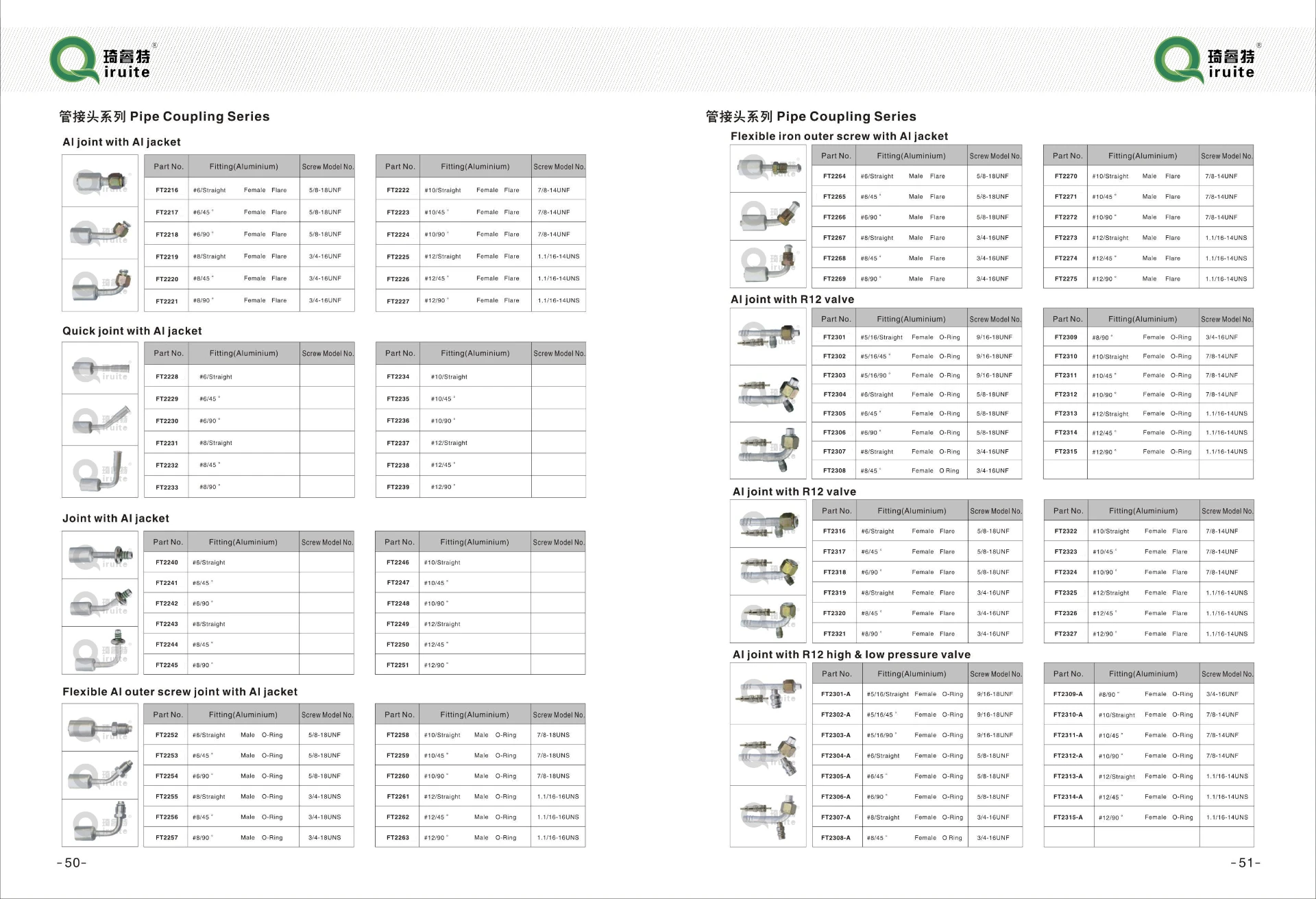air con pipe sizes
Understanding Air Con Pipe Sizes A Comprehensive Guide
When it comes to installing or maintaining an air conditioning system, one of the essential aspects that often gets overlooked is the sizing of the pipes used in the refrigeration cycle. Proper sizing of air conditioning pipes is critical for the efficiency and longevity of the system. In this article, we will delve into the importance of air con pipe sizes, how to choose the right pipes, and the consequences of incorrect sizing.
Why Pipe Size Matters
Air conditioning systems circulate refrigerants through a network of pipes, which are generally categorized into two main types liquid line (small diameter) and gas line (larger diameter). The sizes of these pipes significantly affect the airflow, pressure drop, and overall efficiency of the system. If the pipes are too small, it can lead to increased pressure inside the system, resulting in higher energy consumption and potential damage to the air conditioning unit. Conversely, excessively large pipes can cause insufficient pressure, leading to improper refrigerant flow.
Calculating the Right Pipe Size
To determine the appropriate pipe sizes for an air conditioning system, several factors must be taken into account
1. Capacity of the System The cooling capacity of the air conditioning unit (typically measured in BTUs or kilowatts) directly impacts the size of the pipes needed. Larger systems require larger pipes to accommodate the increased flow of refrigerant.
2. Length of the Run The distance between the indoor and outdoor units contributes to the selection of pipe sizes. Longer runs may necessitate larger diameters to reduce pressure loss and ensure efficient refrigerant flow.
air con pipe sizes

3. Type of Refrigerant Different refrigerants have varying properties, affecting how they flow through pipes. It is crucial to refer to manufacturer guidelines for the specific refrigerant being used to ensure compatibility and efficiency.
4. Temperature and Pressure Conditions The working conditions of the air conditioning system, including ambient temperature and pressure levels, can affect the choice of pipe sizes.
5. Installation Regulations Local building codes and regulations may also dictate specific requirements regarding pipe sizes and materials. It is essential to be aware of these when planning an installation.
Consequences of Incorrect Pipe Sizing
Choosing the wrong size pipes can lead to a myriad of problems. When pipes are undersized, the system may struggle to maintain desired temperatures, leading to an increase in energy bills due to higher operational demands. Additionally, it can result in compressor failure, increased wear and tear, and ultimately, a shortened lifespan for the air conditioning unit.
On the other hand, oversizing pipes can cause a phenomenon known as slugging, where liquid refrigerant returns to the compressor in larger amounts than it can handle, leading to potential liquid damage and inefficiencies in heat exchange.
Conclusion
Selecting the correct air con pipe sizes is a critical factor in ensuring the efficiency and longevity of an air conditioning system. It requires a careful evaluation of various factors, including system capacity, run length, refrigerant type, and local codes. Whether you are installing a new system or maintaining an existing one, consulting with professionals or referring to manufacturer guidelines is recommended to ensure optimal performance. Investing the time and effort into proper pipe sizing will pay dividends in energy savings, system reliability, and comfort in your space. Remember, the goal is always to create a harmonious balance between efficiency and performance for the ultimate air conditioning experience.
-
Ultimate Spiral Protection for Hoses & CablesNewsJun.26,2025
-
The Ultimate Quick-Connect Solutions for Every NeedNewsJun.26,2025
-
SAE J1401 Brake Hose: Reliable Choice for Safe BrakingNewsJun.26,2025
-
Reliable J2064 A/C Hoses for Real-World Cooling NeedsNewsJun.26,2025
-
Heavy-Duty Sewer Jetting Hoses Built to LastNewsJun.26,2025
-
Fix Power Steering Tube Leaks Fast – Durable & Affordable SolutionNewsJun.26,2025

